What Happens in the Hayfield Stays in the Hayfield
From a distance, a hayfield appears to be a rather placid place, until one takes a closer look into what’s really going on out there. What happens in the hayfield stays in the hayfield… until now.
By Ann Simpson
Hayfields are everywhere in the Cariboo, and whether you’re travelling on a highway or on one of the many back roads, they are a major part of the scenery. These fields are an important part of the agricultural economy here, helping to sustain livestock during the long, hard winters.
Many properties, such as ours, will have a hayfield attached to it. Some are large, serious endeavours while others are smaller and simply used as pasture for a few horses. A common practice for property owners without livestock (and something we do), is to have one of the local ranching families maintain the hayfield in exchange for the yield it produces in late summer.
In the early spring just after the snow recedes, the first signs of life to appear are the dandelions and the field is a giant yellow carpet that provides an early food source for the bears. After the dandelions have faded into white masses of cottony seed heads, the Arctic Lupines will arrive, transforming the fields into a sea of purple. The lupines will diminish as the grasses get taller, and a variety of other wildflowers will now begin to appear throughout the summer, and then these too will fade away leaving only the hay just prior to harvest.
Walks in the hayfield during summer reveal so much more than the grasses and flowers that are observable from a distance. It is another world to explore and the experience imparts a kind of intimacy in the tiny details that can be found there.
I haven’t taken too many steps into ours when I immediately spot one of our resident species of the Pond Spreadwings, a Lyre-tipped Spreadwing clinging to a plant stem. These lovely damselflies often drift over from the wetland across the road in search of small flies that can be found in the hayfield. Members of the Spreadwing family hold their wings in an open position away from their bodies when at rest, as opposed to holding them closed against their bodies. Another beautiful feature is their ability to bend and curve their bodies when resting or mating. So very fae-like in their appearance, and I can’t help but feel charmed by the sight of it.
Another visitor from the nearby pond is the Woolly-tailed Marsh Fly, a short-lived type of Hoverfly that is closely related to a Drone Fly. They will feed on pollen and nectar for a short time before mating and depositing eggs in the pond. These eggs will shortly hatch into the unappealing larvae known as the Rat Tail Maggot, which will dwell in the mud before maturing to adults the following year. It’s somewhat nice to at least see those pesky Oxeye Daisies serving a purpose.
Thistles do like hayfields, and ours is no exception. The lovely flowers of the Bull Thistle are rich in nectar, and here I see a group of European (Essex) Skippers enjoying brunch together. Like this thistle, these tiny butterflies are immigrants to Canada where they found an abundance of some of their favourite grasses after being accidentally introduced in Eastern Canada in the early 20th century. It’s not uncommon to see clouds of them fly away from flowers if one approaches too noisily. I always feel like they are amongst the happiest of butterflies when I see them.
There is a section of the field where water pools after the snow melt, creating a perpetually damp area where a large patch of lovely Green Bog Orchids appear annually. This native plant is just one of the many terrestrial orchids we are fortunate to find in this region, and they have a scent that is very attractive to so many insects. A close examination of one plant reveals the lower half of a Three-banded Lady Beetle who is immersed in the hunt for any whiteflies or aphids that may be hiding in there.
The bog orchids are also a good place to check for my favourite spider, the Goldenrod Crab Spider. These beautiful Flower Spiders choose the plants that are most attractive to other insects as their hunting grounds and are quite adept at quickly grabbing any that are not vigilant enough to avoid becoming a meal. One of the more fascinating features of these spiders is their ability to change colouring back and forth from white or yellow during the molting process in order to be better camouflaged on their current plant of choice. Their name refers to their being found quite frequently on Goldenrod sprays, though I have found them on the flowers of Common Cow Parsnip or Western Solomon’s Plume, and even on the Chive flowers we grow in the garden.
I have stopped to look at a patch of Yellow Rattle when something colourful flies by and settles in the grass nearby. Creeping quietly over to that spot, I see a pair of White-faced Meadowhawks grasped firmly together in the bonds of a tryst. Their unusual mating position will allow the male to transport them both to safety if anything threatening approaches – and that includes voyeurs such as me.
Now I’m strolling through a section where I do need to keep looking down in order to avoid the ankle-breaking holes of some resident Columbian Ground Squirrels. Glancing to the side, I see a lone Saskatoon bush and a flash of something grey close to the ground behind the lower leaves. A small colony of Bald-faced Hornets has decided to build a nest there, and I just have to stop to take a closer look. They are actually a wasp species that is very common throughout Canada and the US, and not a true hornet, in spite of the name. There doesn’t seem to be very much activity, when suddenly a small, whitish face appears at the entrance to assess who’s gotten too close to the nest. Known as aggressive defenders, I decide not to linger too long, though I left with doubts, wondering how long the nest might survive in that spot, especially once the Saskatoon fruits appear and a hungry bear comes along.
I’m stopping to look more closely at one of the remaining Arctic Lupines, and sitting on top is one of our nondescript Click Beetles. A large family of many subfamilies, tribes and genera, these beetles can range from colourful forms to very drab ones like this fellow. They have an interesting physiological ability to produce an audible “click” when they use their bodies to launch into the air. Now that this one has reached the top of the lupine, it seems to be assessing what its next move should be.
Another visitor to the lupines is a very large and beautiful Four-spotted Skimmer. Quite active here in June and July, these dragonflies prefer ponds like the one we have nearby, as the females will lay their eggs on floating vegetation. The males are very territorial and spend a great deal of time conducting patrols for any possible encroachment by other males. It is no surprise that the common name of their family is King Skimmers.
As I move north into a meadow just above the hayfield, I begin to encounter plants that prefer poorer soil, and here is where I find our native Elegant Goldenrod. When in season, these will dominate the open, sunny areas and are always a favourite of many insects, and some years those insects will be aphids. Large Daisy Aphids are extremely widespread and belong to a messy genus of both native and non-native species that can make the exact identification difficult. A close observation of one group reveals that some have been bred with wings, a nifty trick to allow colonies to start on another plant and prevent overcrowding. While unsightly, these aphids are a good food source for many other types of insects, particularly Ladybugs.
Many of the Goldenrods are in full bloom and there is a detectable buzz as I approach. We have several species of native Bumble Bees here, and that also includes the visibly larger Cuckoo Bumble Bees. As the name implies, a female will take over the nest of a true Bombus species, and then use the colony’s existing worker bees to raise her offspring. I’m strangely reminded of the Joan Crawford movie Queen Bee during this encounter.
Completing my circuit, I am heading along the uppermost border of the hayfield where it meets a line of aspen trees. Beneath this canopy are several tracts of long, green grasses and here I find a species of March Fly at rest. We have a few different types here, and they will emerge in late spring when the first flowers of the Cow Parsnip appear. As adults, these flies will dine on nectar and are an important pollinator of flowers in the Carrot family, which makes them a useful fly in addition to being just a pretty one. To everything there is a purpose.
As I leave, I take a moment to look back, and the hayfield seems different. It no longer strikes me as a simple field of grass, and I now see a thriving ecosystem that provides for so much more than livestock during the winter. Do not regret the sight of land that has been made into a hayfield. Sometimes, nature is very accepting of the things we humans do.
“All private worlds are good, they are never vulgar places.”
Truman Capote (The Grass Harp, 1951)
Publisher’s note: All photos courtesy of Ann Simpson.
“What Happens in the Hayfield Stays in the Hayfield” ©2025. Ann Simpson and The Renaissance Garden Guy
Ann Simpson is a mycologist, writer, and regular contributor to The Renaissance Garden Guy. She resides in Bridge Lake, British Columbia, where she writes and remains in constant pursuit of her mysterious and surreally beautiful quarry. Click here to follow Ann Simpson on X (Twitter), and find her on Bluesky at Ann in Bridge Lake at Bluesky.
The Renaissance Garden Guy is a participant in the Amazon Associates Program. As an Amazon Associate, The Renaissance Garden Guy earns from qualifying purchases.
Additionally, The Renaissance Garden Guy is a participant in the Bluehost, SeedsNow, and hosting.com (formerly A2 Hosting) affiliate programs. The Renaissance Garden Guy earns a fee/commission each time a visitor clicks on an ad or banner in this site from one of these companies and makes a subsequent qualifying purchase.
Please click here to view The Renaissance Garden Guy Disclosure page.


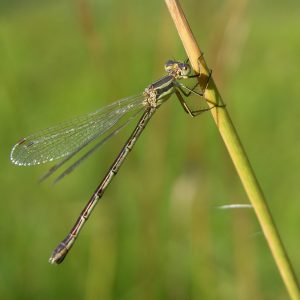
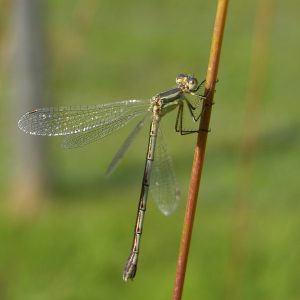
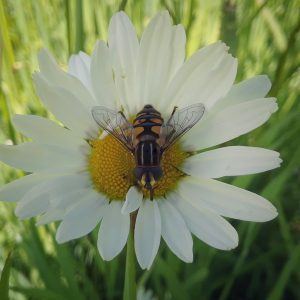
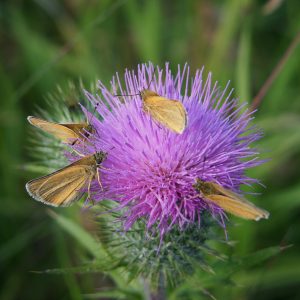
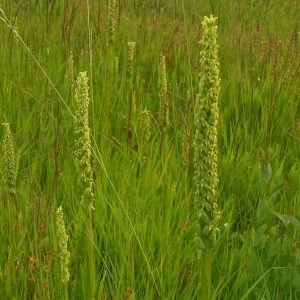
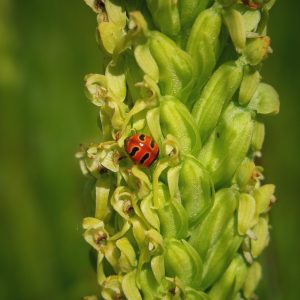
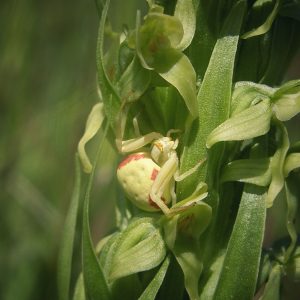
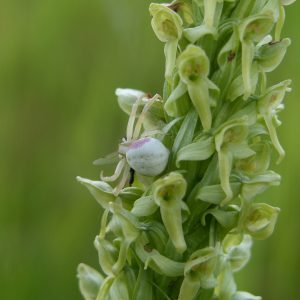

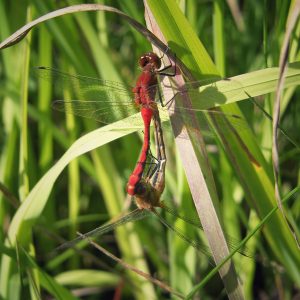
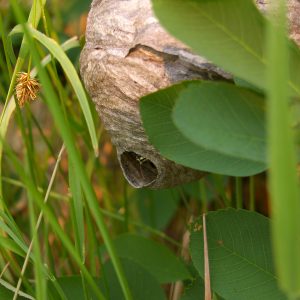
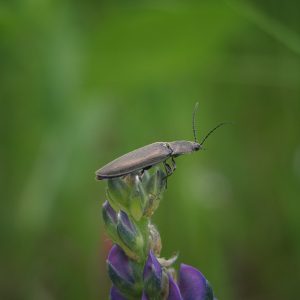
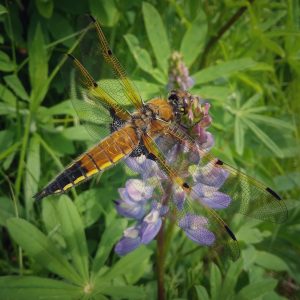
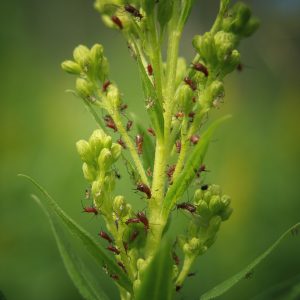
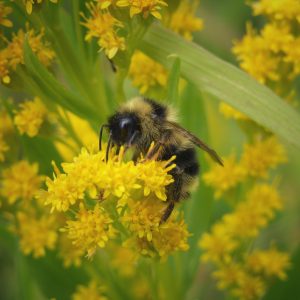
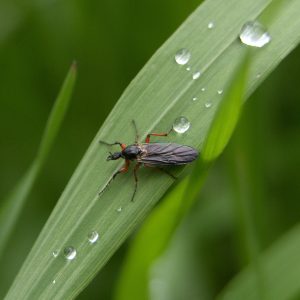



Enlightening! I agree… one should never take their surroundings for granted… I am learning to enjoy and appreciate every little living thing as I get older. The photos are lovely! Thank you, Ann, for writing this beautiful and informative work. And thanks to you, John, for publishing it in The RGG.
Ann’s lovely piece was very illuminating, and, as in the case of all of her pieces, incredibly fascinating. It’s an honor to feature her work here. I’m so happy you enjoyed this one, Tina. Thank you so much for commenting.
Hi Tina! Thanks so much for enjoying the feature – that really means a great deal to me. I’m always happy to hear that others (like myself) are finding it rewarding to notice all the life around us, especially once we take the time to explore the spaces we share. Also, I echo your thanks to John, and I am so very appreciative of the wonderful opportunity he gives me to share my quiet pursuits with others.
What a wonderful essay!
The images are absolutely stunning—a vivid reminder of the marvelous world teeming all around us. It’s incredible to think of the thousands of different species, each with their own unique forms, colors, and ways of life.
From the tiniest beetle to the most delicate moth, insects offer a window into the intricate beauty of nature. This is a celebration of the hidden wonders we often overlook—creatures that flutter, scurry, glow, and hum quietly beside us.🐝🦋🐞🐛
I agree, Roxxy. Ann has proven to be a most gracious and terrifically knowledgeable tour guide for this fascinating and lovely excursion into the secret realms within her glorious hayfield. Thank you for your lovely thoughts, Roxxy, and for reading Ann’s excellent piece.
Thanks so much for your very kind and beautiful comments, Roxxy! Insects and their brethren are indeed fascinating residents of our world, and it is incredibly rewarding to observe them in natural habitats. Thank you again for reading and enjoying the feature.
Ann has reminded me to enjoy my surroundings; especially in nature. There is a whole world easily missed. Many thanks to Ann and John for allowing me to read this beautiful story/article.
Thank you for reading this lovely piece, Rick, and for commenting. What Ann relates here is truly an eye-opener. In nature, there are undeniably beautiful and fascinating worlds within worlds that are awaiting observation and appreciation for those who would take the time to look for them. Thanks once again, Rick.
Thanks so much for your lovely comment, Rick. I agree wholeheartedly with your observation about worlds that are easily missed in our busy lives – fortunately, they are always there waiting for us to notice them.
What a lovely essay. Thank you for reminding readers that nature is all around us. It is so enriching to explore the secret worlds that exist beyond one’s own front door.
Thank you for reading Ann’s lovely piece, Kevin. Your assessment is absolutely correct, and Ann is perfectly suited for, and exceptionally capable of, exploring the hidden miracles of those beautiful, secret worlds.
Thanks so much, Kevin for reading the feature. It is a wonderful reset that refreshes us when we take the time to explore the interesting things that we co-exist with every day.
Fascinating things happen in a hayfield, and thanks to Ann for revealing many of them in this informative article. The saying that ‘there is a lot more than meets the eye,’ is so true here.
I absolutely agree, Yvonne – perfectly stated! A world undreamed of. Thank you for reading Ann’s piece, Yvonne, abd for commenting here. It’s much appreciated.
Thanks so much for reading the piece, Yvonne! We may think we’re taking the field out of the wild, but the can never fully remove the wild from the field. I, for one, am very glad for it too.
Such a rich, hidden landscape! Thanks for helping us see beyond the surface!
I completely agree, Lisa. Ann’s passion for this secret world is very evident in this lovely – and informative (and beautifully photographed) – elegy. Thank you so much for reading her piece, Lisa, and for your kind comments.
Yes, I meant to say that the photos are stunning!
I definitely agree, Lisa. They’re remarkable.
Hi Lisa, I’m so glad you enjoyed the feature!